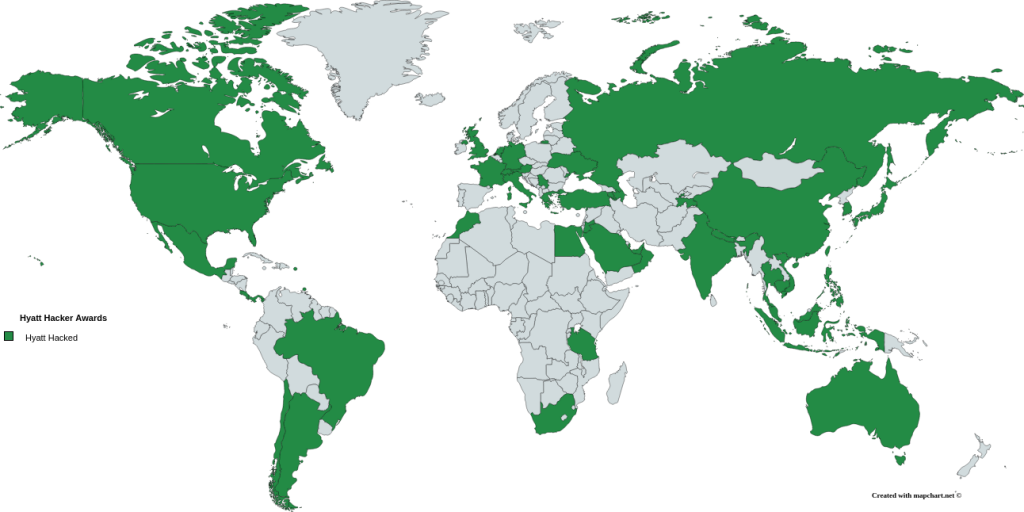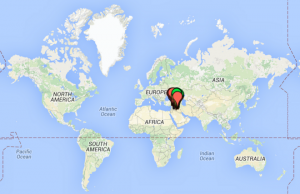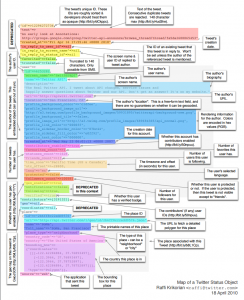Bible vs. Quran – Text analysis answers: Is the Quran really more violent than the Bible? by Tom H. C. Anderson.
Tom’s series appears in three parts, but sharing the common title:
Part I: The Project
From part 1:
With the proliferation of terrorism connected to Islamic fundamentalism in the late-20th and early 21st centuries, the question of whether or not there is something inherently violent about Islam has become the subject of intense and widespread debate.
Even before 9/11—notably with the publication of Samuel P Huntington’s “Clash of Civilizations” in 1996—pundits have argued that Islam incites followers to violence on a level that sets it apart from the world’s other major religions.
The November 2015 Paris attacks and the politicking of a U.S. presidential election year—particularly candidate Donald Trump’s call for a ban on Muslim’s entering the country and President Obama’s response in the State of the Union address last week—have reanimated the dispute in the mainstream media, and proponents and detractors, alike, have marshalled “experts” to validate their positions.
To understand a religion, it’s only logical to begin by examining its literature. And indeed, extensive studies in a variety of academic disciplines are routinely conducted to scrutinize and compare the texts of the world’s great religions.
We thought it would be interesting to bring to bear the sophisticated data mining technology available today through natural language processing and unstructured text analytics to objectively assess the content of these books at the surface level.
So, we’ve conducted a shallow but wide comparative analysis using OdinText to determine with as little bias as possible whether the Quran is really more violent than its Judeo-Christian counterparts.
…
Part II: Emotional Analysis Reveals Bible is “Angriest”
From part 2:
In my previous post, I discussed our potentially hazardous plan to perform a comparative analysis using an advanced data mining platform—OdinText—across three of the most important texts in human history: The Old Testament, The New Testament and the Quran.
Author’s note: For more details about the data sources and methodology, please see Part I of this series.
The project was inspired by the ongoing public debate around whether or not terrorism connected with Islamic fundamentalism reflects something inherently and distinctly violent about Islam compared to other major religions.
Before sharing the first set of results with you here today, due to the sensitive nature of this topic, I feel obliged to reiterate that this analysis represents only a cursory, superficial view of just the texts, themselves. It is in no way intended to advance any agenda or to conclusively prove anyone’s point.
…
Part III – Violence, Mercy and Non-Believers – to appear soon.
A comparison that may be an inducement for some to learn text/sentiment analysis but I would view its results with a great deal of caution.
Two of the comments to the first post read:
…
(comment) If you’re not completing the analysis in the native language, you’re just analyzing the translators’ understanding and interpretation of the texts; this is very different than the actual texts.
(to which a computational linguist replies) Technically, that is certainly true. However, if you are looking at broad categories of sentiment or topic, as this analysis does, there should be little variation in the results between translations, or by using the original. As well, it could be argued that what is most of interest is the viewpoint of the interpreters of the text, hence the translations may be *more* of interest, to some extent. But I would not expect that this analysis would be very sensitive at all to variations in translation or even language.
…
I find the position taken by the computational linguist almost incomprehensible.
Not only do we lack anything approaching a full social context for any of the texts in their original languages, moreover, terms that occur once (hapaxes) number approximately 1,300 in the Hebrew Bible and over 3,500 in the New Testament. For a discussion of the Qur’ān, see: Hapaxes in the Qur’ān: identifying and cataloguing lone words (and loadwords) by Shawkat M. Toorawa. Toorawa includes a list of hapaxes for the Qur’ān, a discussion of why they are important and a comparison to other texts.
Here is a quick example of where social context can change how you read a text:
23 The priest is to write these curses on a scroll and then wash them off into the bitter water. 24 He shall have the woman drink the bitter water that brings a curse, and this water will enter her and cause bitter suffering. 25 The priest is to take from her hands the grain offering for jealousy, wave it before the LORD and bring it to the altar. 26 The priest is then to take a handful of the grain offering as a memorial offering and burn it on the altar; after that, he is to have the woman drink the water. 27 If she has defiled herself and been unfaithful to her husband, then when she is made to drink the water that brings a curse, it will go into her and cause bitter suffering; her abdomen will swell and her thigh waste away, and she will become accursed among her people. (Numbers 5:23-27)
Does that sound sexist to you?
Interesting because a Hebrew Bible professor of my argued that it is one of the earliest pro-women passages in the text.
Think about the social context. There are no police, no domestic courts, short of retribution from the wife’s family members, there are no constraints on what a husband can do to his wife. Even killing her wasn’t beyond the pale.
Given that context, setting up a test that no one can fail, in the presence of a priest, which also deters resorting to a violent remedy, sounds like it gets the wife out of a dangerous situation where the priest can say: “See, you were jealous for no reason, etc.”
There’s no guarantee that is the correct interpretation either but it does accord with present understandings of law and custom at the time. The preservation of order in the community, no mean thing in the absence of an organized police force, was an important thing.
The English words used in translations also have their own context, which may be resolved differently from those in the original languages.
As I said, interesting but consider with a great deal of caution.




